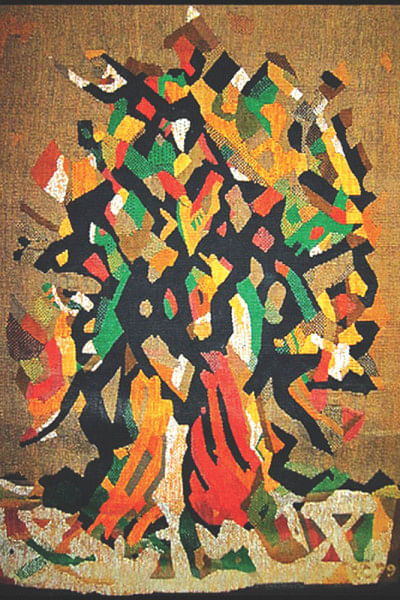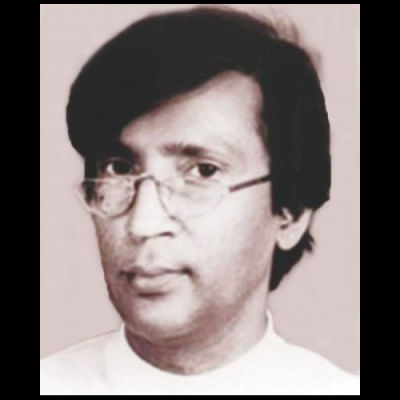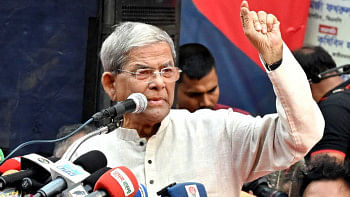Rashid ChoWdhury - A pioneering tapestry artist


Rashid was the pioneer of tapestry in this country and definitely the finest artist of this particular genre till date. He successfully introduced tapestry in various forms. His works are unparalleled in their subjects and style. Blending of our tradition with modern western art is the main characteristics of his works.
About the iconic artist, sculptor cum painter Syed Abdullah Khalid said, “His forte was to search for fresh themes and present them with a novel approach. The artist established his uniqueness -- particularly in terms of design and colour composition. The thickness of colours, geometric compositions and aestheticism distinguish his works. This style helped him to hold his position at the forefront of the Bangladeshi art scenario.”
Born in the village of Haroa, under Faridpur district, Rashid completed his five-year course in fine arts from the Dacca Art College (now Faculty of Fine Arts, University of Dhaka) in 1954 and attended a teachers' training certificate course at Asutosh Museum of the Calcutta University. He did his post-graduate studies under a Spanish government scholarship, and studied sculpture at the Central Escula des Bellias Artes de San Fernando in Madrid from 1956 to '57. He also studied sculpture, fresco and tapestry at the Academy of Jullian and Beaux Arts in Paris from 1960 to '64.
In his artworks, the artist used azure, white, black, crimson, green, brown and more. He was deeply inspired by varied organic forms, like vegetation, flowers and plants. Rashid made a great attempt to present synchronisation of colours in his works. He used colours with vivid splendour to give a distinct message through his works, which for many years impressed art aficionados both at home and abroad.
Rashid Chowdhury accomplished knowledge of the indigenous origin and technical details of Tapestry at Academie de Juliette in Paris. His teacher was Jean Lursate, who is considered the father of modern tapestry. After returning from France in 1964 he had fully engaged in producing tapestry at his own factory and joined as a part time teacher in the University of Engineering.
Rashid received the first prize for fresco painting in Beaux Arts in Paris and first prize in RCD Biennale in Tehran. He also received Ekushey Padak and the Bangladesh Shilpakala
Academy Award.
The artist died in 1986.

 For all latest news, follow The Daily Star's Google News channel.
For all latest news, follow The Daily Star's Google News channel. 



Comments